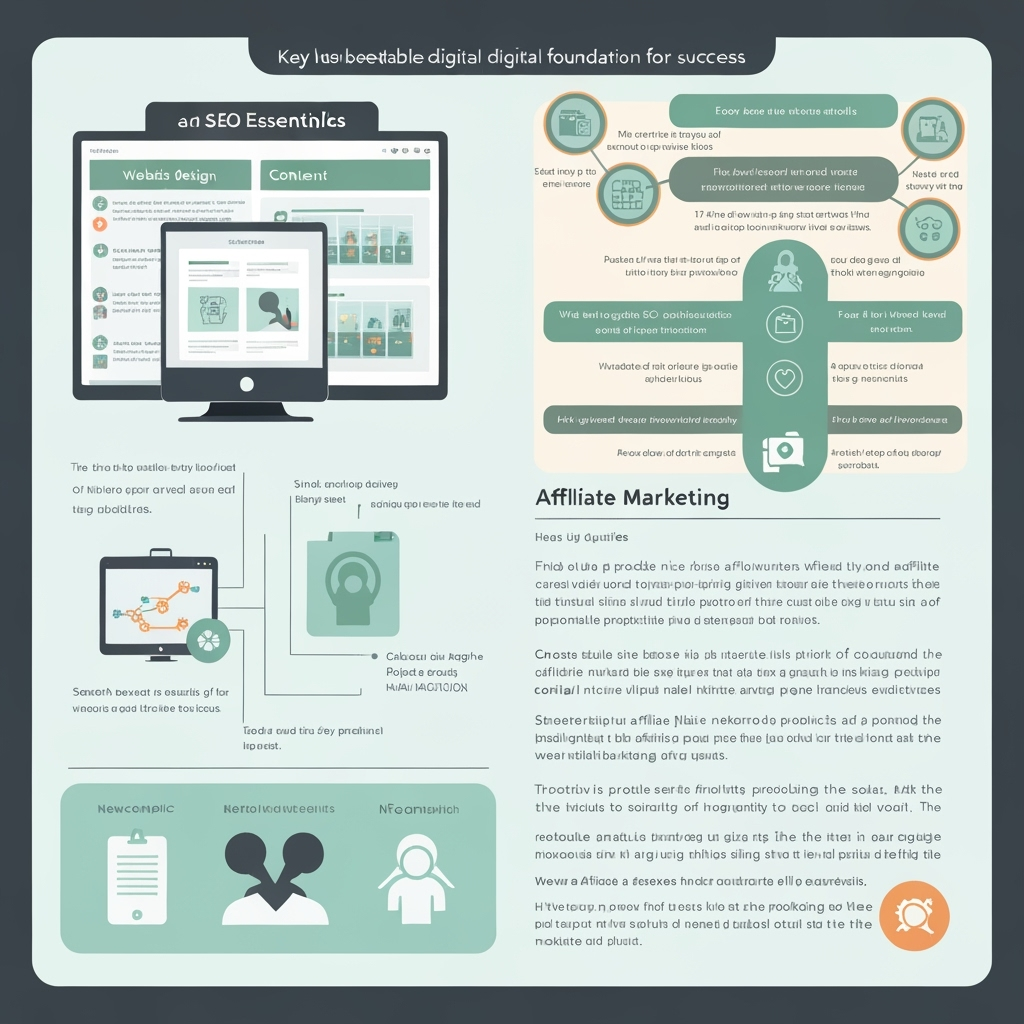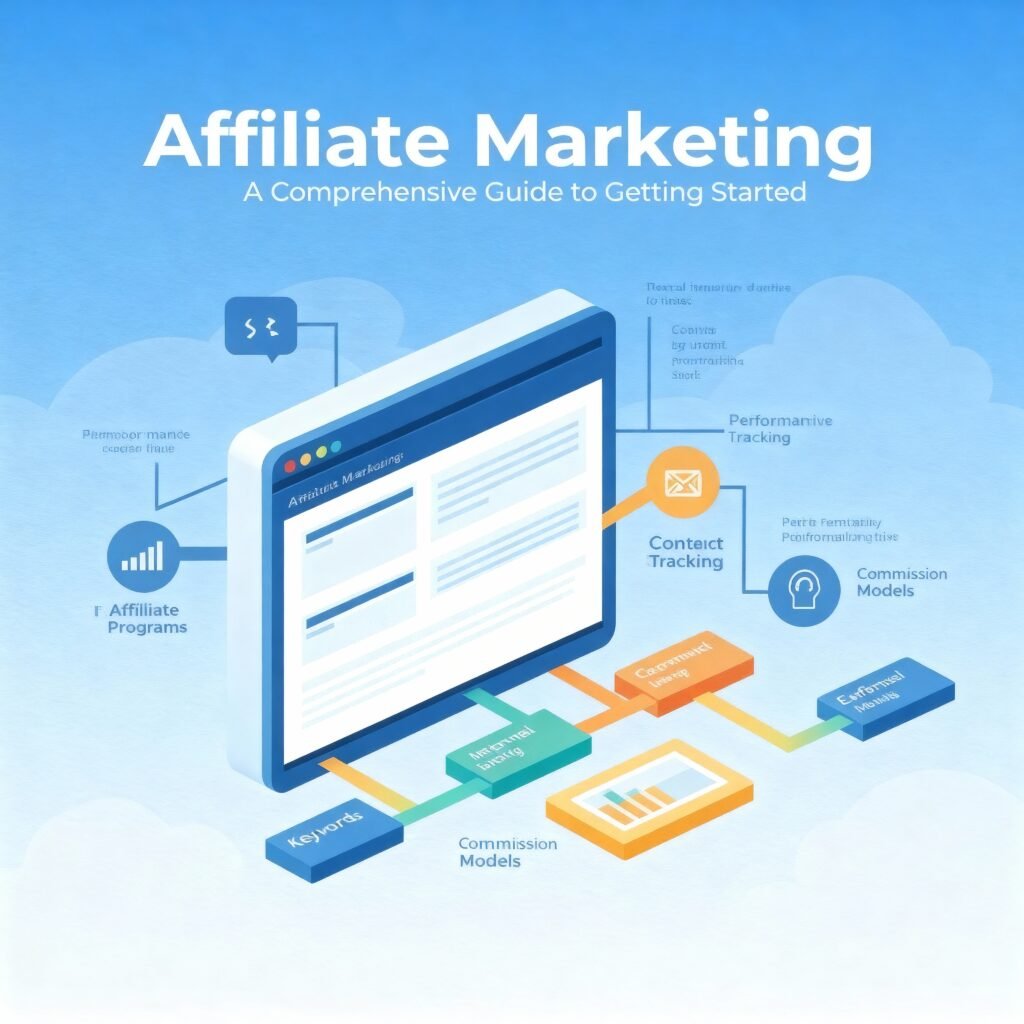
Affiliate marketing has become one of the most effective ways for individuals and businesses to earn money online. As e-commerce continues to grow worldwide, affiliate marketing provides an accessible, low-risk opportunity to generate income without the need to create your own products. This comprehensive guide will take you through the fundamentals of affiliate marketing, its benefits, step-by-step instructions to get started, and best practices for long-term success.
Chapter 1: Understanding Affiliate Marketing
Affiliate marketing is a performance-based business model where you promote another company’s products or services and receive a commission for every sale or lead generated through your unique affiliate link. It benefits all parties involved: businesses gain new customers, affiliates earn commissions, and consumers discover valuable products.
Key terms to understand:
- Affiliate (Publisher): You, the person promoting the product or service.
- Merchant (Advertiser): The company that owns the product or service.
- Affiliate Network: A platform that connects merchants and affiliates, handling tracking and payments.
- Commission: The percentage or fixed amount you earn for each successful conversion.
Chapter 2: Benefits of Affiliate Marketing
Affiliate marketing is appealing for several reasons:
- Low Startup Costs: You don’t need to create a product, manage inventory, or handle shipping.
- Passive Income Potential: Once set up, well-placed links can generate revenue 24/7.
- Flexibility: Work from anywhere with just a laptop and internet connection.
- Scalability: Promote multiple products and diversify your income streams.
- Minimal Risk: If one product underperforms, you can quickly switch to a better offer.
Chapter 3: Choosing a Profitable Niche
Selecting the right niche is the foundation of a successful affiliate business. Choose a topic that balances your personal interest with market demand.
Steps to choose a niche:
- Identify topics you’re passionate about.
- Research audience demand using tools like Google Trends or AnswerThePublic.
- Analyze competitors to see what products they promote.
- Consider profitability — some niches offer higher commissions than others (e.g., software, finance, health).
Chapter 4: Finding Affiliate Programs
Once you’ve chosen a niche, look for affiliate programs that align with your audience.
Popular options include:
- Amazon Associates: Ideal for beginners, offers millions of products.
- Share ASale & CJ Affiliate: Large networks with various merchants.
- Specialized Programs: Many companies offer direct partnerships (e.g., software, online courses).
Compare programs based on:
- Commission rates
- Cookie duration (how long referrals are tracked)
- Payment methods
- Support and resources offered
Chapter 5: Building Your Platform
Your website or blog will be the hub of your affiliate marketing efforts. A professional platform builds trust and allows you to share valuable content.
Steps to set up:
- Register a memorable domain name.
- Use WordPress or a similar CMS for flexibility.
- Install a clean, responsive theme.
- Set up essential pages (About, Contact, Privacy Policy, Disclaimer).
- Optimize for speed and mobile-friendliness.
Chapter 6: Creating High-Quality Content
Content is the engine that drives affiliate conversions. Focus on providing real value to your audience.
Effective content types include:
- Product Reviews: Honest assessments with pros and cons.
- Comparison Posts: Side-by-side comparisons of similar products.
- How-to Guides: Tutorials that naturally include affiliate recommendations.
- Listicles: “Top 10” style posts featuring curated products.
- Videos and Podcasts: For audiences that prefer multimedia content.
Always disclose affiliate relationships to remain transparent and compliant.
Chapter 7: Driving Traffic to Your Content
Great content needs an audience. Use multiple channels to bring targeted traffic to your site.
Strategies include:
- Search Engine Optimization (SEO): Optimize content for relevant keywords.
- Social Media Marketing: Share posts on platforms where your audience spends time.
- Email Marketing: Build a list and nurture subscribers with value-packed newsletters.
- Paid Ads: Consider Google Ads or social media ads to accelerate growth.
Chapter 8: Best Practices for Success
To maximize results, focus on:
- Transparency: Clearly disclose affiliate relationships.
- Trust: Promote only products you genuinely believe in.
- Diversification: Don’t rely on one program or traffic source.
- Data Tracking: Monitor clicks, conversions, and revenue to refine your strategy.
- Consistency: Publish new content regularly to build authority.
Chapter 9: Common Mistakes to Avoid
Avoid these pitfalls:
- Spamming affiliate links with no context.
- Promoting low-quality or irrelevant products.
- Ignoring analytics and failing to optimize campaigns.
- Over-relying on one platform (e.g., only Instagram or only SEO).
Chapter 10: Tools and Resources
Recommended tools for affiliates:
- Keyword Research: Ahrefs, SEMrush, Uber suggest.
- Link Management: Pretty Links, ThirstyAffiliates.
- Content Creation: Canva, Grammarly, Surfer SEO.
- Analytics: Google Analytics, affiliate network dashboards.

Conclusion
Affiliate marketing is one of the most accessible online business models available today. By choosing a niche, building a platform, creating valuable content, and consistently optimizing your approach, you can generate sustainable income over time. Like any business, it requires patience, strategy, and ongoing effort — but the rewards can be significant if you commit to the process.